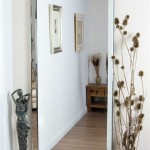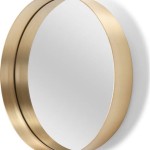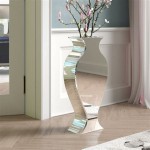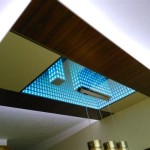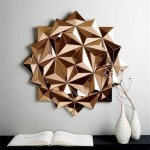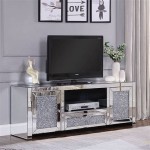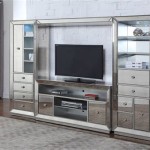How To Test For A Two-Way Mirror
Two-way mirrors, often depicted in spy movies and crime dramas, can evoke a sense of unease and privacy violation. Understanding how to identify a two-way mirror can provide peace of mind in various situations, from public restrooms to changing rooms. Several methods exist for determining whether a reflective surface is a standard mirror or a two-way mirror, each with varying degrees of reliability.
The Fingernail Test
One of the most common and readily available methods is the fingernail test. This test relies on the principle of surface reflection. A regular mirror has a second layer of backing paint applied to the back of the glass. This backing creates a tiny gap between your fingernail and the reflection when you touch the mirror's surface. With a two-way mirror, this gap is absent because there is no backing. The reflective coating is applied directly to the glass surface. Therefore, when touching a two-way mirror, your finger appears to directly touch its reflection.
However, the fingernail test has limitations. The presence or absence of a gap can be subtle and difficult to discern, especially with thicker glass or certain types of coatings. Additionally, some modern two-way mirrors are manufactured with a thin protective layer that can create a small gap, potentially leading to a false negative result.
The Light Test
Another method involves using a bright light source, such as a flashlight or the flashlight feature on a smartphone. In a darkened room, shining the light directly onto the reflective surface can reveal what lies behind it. A regular mirror will reflect most of the light back, making it difficult to see through. A two-way mirror, however, will allow some light to pass through, potentially illuminating the observation area behind it.
The effectiveness of the light test depends heavily on the lighting conditions on both sides of the mirror. If the observation room behind a two-way mirror is brightly lit, it might be more difficult to see through, even with a strong light source. Conversely, a dimly lit observation room might be easier to detect, even with less powerful light.
The Sound Test
This method relies on the principle of sound transmission. A two-way mirror, being thinner than a typical wall, might transmit sound more readily. By knocking on the surface and listening closely, one can sometimes discern a difference in the sound produced. A hollower sound might suggest a hidden space behind the mirror, while a solid, dull thud would indicate a regular wall and mirror.
Like the other methods, the sound test is not foolproof. The construction of the wall and the surrounding environment can influence the sound produced, making it difficult to draw definitive conclusions.
The Observation Test
If circumstances permit, careful observation of the surrounding environment can provide valuable clues. Look for unusual features such as small gaps around the edges of the mirror, hidden cameras, or ventilation grilles that appear out of place. Discrepancies in the wall's dimensions or noticeable differences in wall texture can also indicate a hidden space.
This method requires a keen eye for detail and may not be applicable in all situations. However, when combined with other testing methods, it can strengthen the assessment of a potential two-way mirror.
The Viewing Angle Test
This method leverages the principles of light reflection and transmission. By positioning yourself very close to the mirror and shielding your eyes from ambient light, you can attempt to look through the reflective surface at an oblique angle. This can sometimes reduce the reflectivity and increase the transmissivity, allowing you to see into the observation area behind the mirror. If the room behind is darker than the room you are in, this method may be more effective.
This test is not always reliable and can be difficult to execute effectively. The angle required and the lighting conditions play crucial roles in its success.
Combination of Methods
The most reliable approach to testing for a two-way mirror is to combine several of the aforementioned methods. By using the fingernail test, the light test, and the observation test in conjunction, one can significantly increase the probability of correctly identifying a two-way mirror. While no single method is foolproof, the combined evidence provides a stronger basis for assessment.
It is important to note that these methods are not definitive and professional advice should be sought if privacy concerns are serious. Employing a combination of these tests can provide a reasonable degree of certainty, but consulting with security experts or law enforcement might be necessary in situations where privacy is paramount.

How To Tell If A Mirror Is Two Way Or Not 8 Steps With Pictures

How To Detect A Two Way Mirror Fingernail Test

Fingernail Test Comparison Between Standard Mirror And Acrylic Two Way Mirrors

How To Tell If A Mirror Is Two Way Or Not 8 Steps With Pictures

Lpt Always Do This Finger Test To Check For 2 Way Mirrors In Hotels And Changing Rooms R Lifeprotips
Is It Glass Or A Two Way Mirror The Balancing Act

Two Way Mirror Supplier One Wholer Glass Manufacturer Ordinary Mirrors

How To Spot A 2 Way Mirror 5 Minute Crafts

How To Detect A Two Way Mirror Fingernail Test

Forwarded Messages A Mirror Or 2 Way Glass Two Helpful Hints Things To Know

